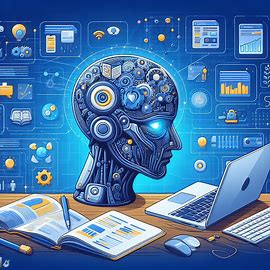Introduction
Website usability and user experience (UX) are crucial factors that affect the success of any online business. Website usability refers to how easy and intuitive it is for users to navigate and interact with a website, while user experience refers to how users feel and perceive a website, such as satisfaction, engagement, trust, etc.
According to a study by Forrester Research, a well-designed user interface can increase conversion rates by up to 200%, and a better UX design can yield conversion rates up to 400%. Moreover, according to a report by Adobe, 38% of users will stop engaging with a website if the content or layout is unattractive, and 39% will stop engaging if the website takes too long to load.
Therefore, it is essential for website owners and designers to test and improve their website usability and user experience, and to ensure that their website meets the needs and expectations of their target audience. However, testing and improving website usability and user experience can be challenging and time-consuming, especially when there are many aspects to consider, such as design, content, functionality, performance, accessibility, etc.
Fortunately, artificial intelligence (AI) can help website owners and designers to test and improve their website usability and user experience, by automating and optimizing various tasks and processes, such as data analysis, content creation, user feedback, personalization, etc. AI is the branch of computer science that aims to create machines or systems that can perform tasks that normally require human intelligence, such as understanding natural language, recognizing images, generating content, making decisions, etc.
In this article, we will explore how to use AI to test and improve your website usability and user experience, showcasing some of the best AI tools and their unique features, benefits, and potential applications. We will also provide some tips and best practices on how to use these AI tools effectively and responsibly.
How to use AI to test and improve your website usability and user experience
There are many different ways to use AI to test and improve your website usability and user experience, depending on your goals and needs.
- Use AI to analyze your website data and performance: One of the best ways to use AI to test and improve your website usability and user experience is to use AI tools that can analyze your website data and performance, and provide you with insights and recommendations on how to optimize your website. For example, you can use AI tools such as Google Analytics, Hotjar, or Crazy Egg to collect and analyze data on your website traffic, behavior, conversions, etc., and to identify issues, opportunities, and trends. You can also use AI tools such as PageSpeed Insights, GTmetrix, or Pingdom to measure and improve your website speed, performance, and accessibility, and to reduce loading time, bounce rate, and errors.
- Use AI to create and optimize your website content: Another way to use AI to test and improve your website usability and user experience is to use AI tools that can create and optimize your website content, such as text, images, videos, etc., and to ensure that your content is relevant, engaging, and persuasive. For example, you can use AI tools such as ChatGPT, Copy.ai, or Jarvis to generate and optimize your website copy, headlines, slogans, etc., and to ensure that your content is aligned with your brand voice, tone, and style. You can also use AI tools such as Canva, Lumen5, or InVideo to create and optimize your website graphics, videos, animations, etc., and to ensure that your content is attractive, appealing, and captivating.
Some of the best ways to use AI to test and improve your website usability and user experience are:
- Use AI to collect and analyze your user feedback: A third way to use AI to test and improve your website usability and user experience is to use AI tools that can collect and analyze your user feedback, such as ratings, reviews, comments, surveys, etc., and to provide you with insights and suggestions on how to improve your website. For example, you can use AI tools such as SurveyMonkey, Typeform, or Qualtrics to create and conduct online surveys, polls, quizzes, etc., and to collect and analyze user feedback on your website usability, user experience, satisfaction, etc. You can also use AI tools such as Trustpilot, Yelp, or Google My Business to collect and analyze user ratings, reviews, and testimonials on your website quality, service, reputation, etc.
- Use AI to personalize your website user experience: A fourth way to use AI to test and improve your website usability and user experience is to use AI tools that can personalize your website user experience, by using data analysis, machine learning, and natural language processing to understand your user needs, preferences, and behavior, and to provide them with customized and tailored content, offers, and recommendations. For example, you can use AI tools such as Optimizely, Unbounce, or VWO to create and test different versions of your website, landing pages, forms, etc., and to optimize them for conversion, retention, and loyalty.
These are some of the best ways to use AI to test and improve your website usability and user experience. However, there are many more ways to use AI to test and improve your website usability and user experience, depending on your creativity and innovation. The key is to find the right AI tools that suit your goals and needs, and to use them wisely and effectively.
AI tools can provide many benefits for website owners and designers, such as:
- Saving time and money: AI tools can automate and optimize many tasks and processes that would otherwise require human intervention, such as data analysis, content creation, user feedback, personalization, etc. This can save you time and money, and allow you to focus on more strategic and creative aspects of your website.
- Increasing efficiency and productivity: AI tools can perform tasks faster and more accurately than humans, such as data analysis, content creation, user feedback, personalization, etc. This can increase your efficiency and productivity, and enable you to deliver better results and outcomes.
- Enhancing quality and creativity: AI tools can improve the quality and creativity of your website, by using advanced data processing, natural language generation, computer vision, etc. This can enhance the design, content, functionality, and performance of your website, and make it more attractive, appealing, and captivating.
- Improving user experience and satisfaction: AI tools can provide a more personalized and enjoyable user experience, by using data analysis, machine learning, and natural language processing to understand your user needs, preferences, and behavior, and to provide them with customized and tailored content, offers, and recommendations. This can improve your user satisfaction and loyalty, and increase your retention and referrals.
However, AI tools also have some limitations and challenges, such as:
- Cost and accessibility: AI tools can be expensive and difficult to access, especially for small and medium-sized website owners and designers. They may require a lot of computational power and data to train and run, and they may not be compatible with all platforms and devices. They may also require technical skills and expertise to use and maintain, and they may not be available in all languages and regions.
- Reliability and accuracy: AI tools can be unpredictable and unreliable, especially when they encounter new or complex situations that they have not been trained for. They may produce errors or inconsistencies in their outputs, such as grammatical mistakes, factual inaccuracies, logical fallacies, etc. They may also be influenced by biases or prejudices that may exist in the data or algorithms that they use, and they may not be able to explain or justify their decisions or actions.
- Ethical and social issues: AI tools can raise ethical and social issues, such as privacy, security, transparency, accountability, etc. They may collect and use personal or sensitive data from you or your users, without your consent or knowledge, and they may pose risks of data breaches or misuse. They may also replace or reduce human roles or interactions, and they may affect human values, norms, or behaviors.

AI tools are not just tools; they are powerful and intelligent systems that can help you test and improve your website usability and user experience. However, they are not magic or miracle solutions; they are still dependent on your input, guidance, and oversight. Therefore, you need to use AI tools wisely and effectively, and to balance them with your creativity, judgment, and empathy. By doing so, you can leverage the potential of AI tools to create value for you and your users.
Conclusion
AI can help you test and improve your website usability and user experience, by automating and optimizing various tasks and processes, such as data analysis, content creation, user feedback, personalization, etc. AI tools are software applications that use AI techniques, such as machine learning, natural language processing, computer vision, etc., to perform specific functions or tasks. There are many AI tools available in the market that can help you test and improve your website usability and user experience, by saving you time and money, increasing your efficiency and productivity, enhancing your quality and creativity, and improving your user satisfaction and loyalty. Some of the best AI tools for testing and improving your website usability and user experience are Google Analytics, Hotjar, Crazy Egg, PageSpeed Insights, GTmetrix, Pingdom, ChatGPT, Copy.ai, Jarvis, Canva, Lumen5, InVideo, SurveyMonkey, Typeform, Qualtrics, Trustpilot, Yelp, Google My Business, Optimizely, Unbounce, VWO, Amazon Personalize, Netflix, and Spotify.
To use AI to test and improve your website usability and user experience, you need to consider some factors and criteria, such as your goal and audience, your platform and format, your budget and resources, the features and capabilities of the AI tools, and the pricing and support of the AI tools. You also need to use some methods and sources to help you with this process, such as research and analysis, trial and testing, feedback and recommendations.

